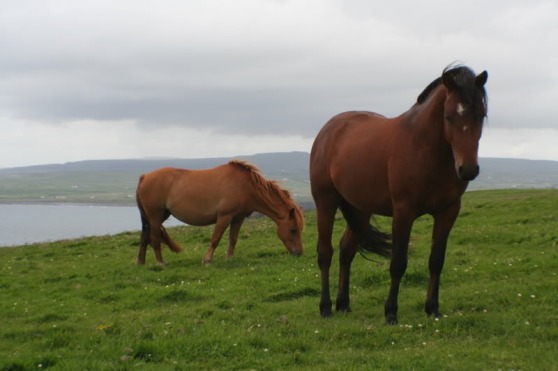Hello everybody, I thought it was high time for another herbal archaeology roundup! Here’s a selection of interesting stories about our ancestors’ use of worts. The headings are links to the articles.
Starting with the oldest first…
Neandertals took their bitters
Archaeologists in Spain chemically analyzed microscopic plant remains in calcified plaque found on Neandertal teeth. They found Neandertals were eating cooked plants, as well as chamomile and yarrow. Not only that, but according to this article, these particular Neandertals, who lived about 50,000 years ago, were eating more veggies than meat. Chamomile and yarrow are bitter, and DNA shows the Neandertals did taste bitterness, so the archaeolgists believe they were consuming the plants for their medicinal value.
However, another paper, disputes the findings on the grounds that while not impossible, there is insufficient evidence that the Neandertals were eating the plants direction. Instead, they may have consumed them indirectly when eating the stomach contents of herbivores. (Please note that we now know Neandertals did not look like the reconstruction in that article. Below is a more modern reconstruction.)
Ancient Scandinavians flavored their booze with herbs
We know that the Egyptians used herbs to flavor (and likely medicate) their wine. They weren’t the only ones. Vessels from Bronze and Iron Age (pre-Viking) Norse burials have been analyzed to determine their contents, which turns out to have been a complex mixture of barley, wheat, rye, honey, cranberries and lingonberries, herbs, and sometimes grape wine imported from southern Europe. It is thought that because the burials are relatively wealthy (they have a lot of expensive stuff in them), this type of alcohol was fancy and perhaps only available to the wealthy. Among the herbs were bog myrtle, yarrow, juniper, and birch resin. The article doesn’t address the medicinal properties of these herbs, but does note they might have been selected in part for those qualities. Of course there’s no reason an herb couldn’t be used both as medicine and for flavor. A couple of modern breweries are selling recreations of ancient brews, so you might even be able to try some yourself.
Roman meds discovered in 2nd century BC shipwreck
Medicinal tablets from a Roman shipwreck, dated ca. 140-120 BC, were analyzed by a geneticist from the Smithsonian Conservation Biology Institute in Washington, D.C. The tablets, made from ground plant material, were contained within a wooden medical chest. DNA results showed the tablets contained animal and vegetable fats, wild onion, carrot, parsley, cabbage, radish, alfalfa, hawthorn, hibiscus, pine resin, chestnut, and zinc compounds. According to this report on the research, the scientists believe the tablets would have been dissolved in water and applied topically, to treat eye disease and possibly skin wounds.
The idea of preserving herbs by presumably drying and then grinding them and forming them into tablets is interesting. It certainly would have made them more convenient for travel.
Late-medieval Irish herbal recipe discovered
The recipe, written in medieval English and inscribed on a piece of slate, dates from the 1400s. It is believed to have been for a poultice, possibly for treating skin wounds in horses. The blend contained wheat meal, pig’s lard, and butter, as well as a number of herbs. Here is the recipe in modern English:
“Weed plantain….. meadowsweet and leaves of silverweed (Irish word: briosclán) and butter and boiled ribwort plantain (lambs tongue) and little/some mallows (hocks) and groundsel and lousewort (rattle), swine grease/lard and wall pennywort, egg yolks, chickweed, wheat meal or rye-meal or similar meal and …butter… and two stems of red and rotting dwarf elder. Take a plaster of nettles (most likely the dead-nettle species), horse-mint, great plantain, ribwort and mistletoe (possibly from the Irish word: druadhlus)” (after Britton & Fletcher, 1990).
The words in parentheses are the names used in the original text, so for example, ribwort plantain was referred to as “lamb’s tongue” and mallows as “hocks.” In one case, the Irish name for a plant was used, and possibly the Irish name for mistletoe was used also. The article has photos of the herbs and brief descriptions of the kind of ailments they were used to treat.
You can access the article by Britton and Fletcher, from which the translated text is copied, here. You will need to create a (free) account in order to read the full text. (You can get up to three JStor articles every two weeks with a free account.)
19th century herbal tonic and bitters recreated
A hundred-and-fifty years ago might not be what you think of when you think “archaeology,” but it is. Urban construction often unearths sites, and archaeological firms are called in to excavate before construction can proceed. At the site of a former German beer garden in New York’s Lower East Side, archaeologists recovered glass bottles labelled “Elixir of Long Life” and “Dr. Hostetter’s Stomach Bitters.” The archaeologists wanted to taste these blends for themselves. They tracked down a recipe for Elixir of Long Life in a contemporary German medical guide, and contained aloe, gentian, rhubarb, saffron, zedoary, water, and alcohol. The bitters contained Peruvian cinchona bark, gentian, orange peel, anise, coriander, gum kino (a kind of tree sap), cinnamon, cardamom, alcohol, water, and sugar. This sounds like an excellent recipe, actually–I might try it myself!
A couple other reports with a little more info can be found here (this one has recipes with quantities if you want to play along at home) and here.




